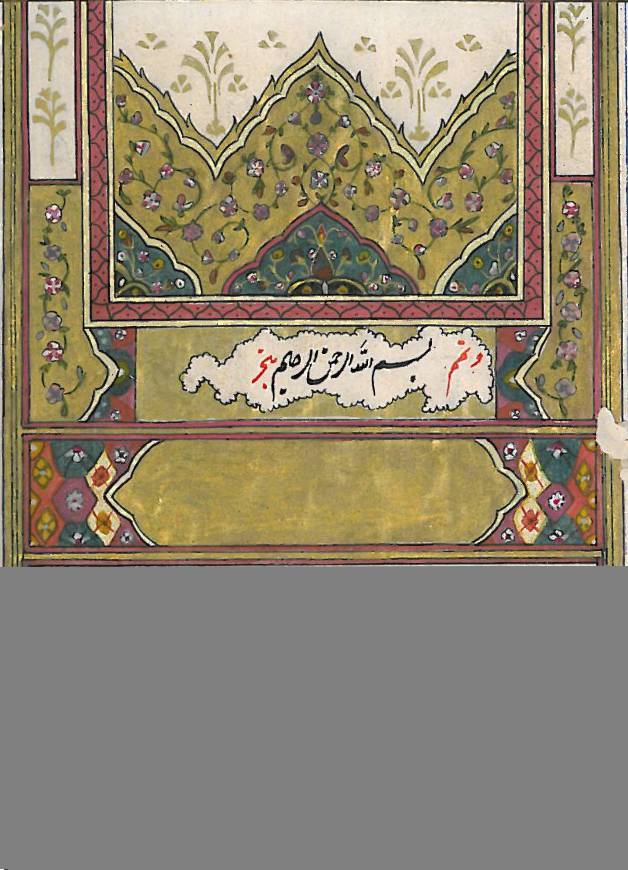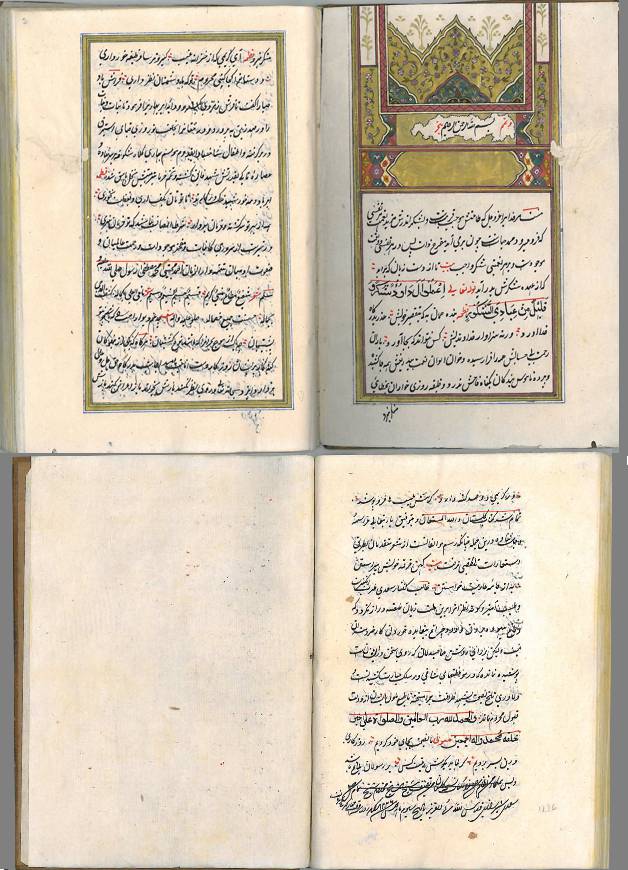A177) Sadi, Golestan
Persian illuminated manuscript on paper, dated 1226AH, 1811AD.
Leaf dimensions: mm. 220 x 150; written space: mm. 175 x 95. Text written in black inked nastaliq calligraphy on 15-lined single column, some words in red. It is composed by 93 leaves, the last blank, complete. The decoration set numbers a single page illuminated frontispiece in gold and colours (unwan). The written space of the second page is framed by three wire-like lines in gold, black and blue. The binding is blind-stampes with golden inserts, and has been restored.
Some restored wormholes otherwise very good conditions.
The text contains the widely known poetic work (in the unusual form of the prosimetrum) Golestan ('The rose garden') by the great XIII-th century Persian poet 'Abu Mohammed Muli 'ibn Abd-Allah Sadi Sirazi (1210 - 1291/2 AD.). The content of the Golestan is multifaceted as for its character and edifying as for its purpose. It is subdivided in eight thematic sections, sprinkled with an aphoristic, slightly ironic spirit.
Sa?di wrote the Golestan in 1258 AD., which was an ill-fated year for the middle-eastern Islamic civilization: that year the Mongol army under the command of the great khan Hülegü defeated the troops of the last Abbasid caliph and wildly plundered Baghdad, the Caliphate's capital city, carrying out one of the most appalling massacres in the entire medieval history, and putting de facto an end to the institution of the Islamic caliphate itself.
Leaf dimensions: mm. 220 x 150; written space: mm. 175 x 95. Text written in black inked nastaliq calligraphy on 15-lined single column, some words in red. It is composed by 93 leaves, the last blank, complete. The decoration set numbers a single page illuminated frontispiece in gold and colours (unwan). The written space of the second page is framed by three wire-like lines in gold, black and blue. The binding is blind-stampes with golden inserts, and has been restored.
Some restored wormholes otherwise very good conditions.
The text contains the widely known poetic work (in the unusual form of the prosimetrum) Golestan ('The rose garden') by the great XIII-th century Persian poet 'Abu Mohammed Muli 'ibn Abd-Allah Sadi Sirazi (1210 - 1291/2 AD.). The content of the Golestan is multifaceted as for its character and edifying as for its purpose. It is subdivided in eight thematic sections, sprinkled with an aphoristic, slightly ironic spirit.
Sa?di wrote the Golestan in 1258 AD., which was an ill-fated year for the middle-eastern Islamic civilization: that year the Mongol army under the command of the great khan Hülegü defeated the troops of the last Abbasid caliph and wildly plundered Baghdad, the Caliphate's capital city, carrying out one of the most appalling massacres in the entire medieval history, and putting de facto an end to the institution of the Islamic caliphate itself.




